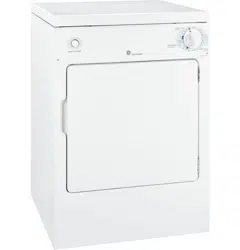Documents: Go to download!
User Manual
- User Manual - (English)
- Quick specs - (English)
Owner’s Manual Electric Dryer
Operating Instructions
About the dryer control panel
(models DSKS333E and DSKP333E)
You can locate your model number on the label on the front of the dryer behind the door. Throughout this manual, features and appearance may vary from your model.

About the control settings.
NOTE: Not all features are available on all dryer models.
IMPORTANT: Clean the lint filter each time you use the dryer.
 Automatic cycles automatically determine fabric dryness. Select EXTRA DRY for heavier fabrics or to make regular fabrics drier. Timed cycles run for a selected time.
Automatic cycles automatically determine fabric dryness. Select EXTRA DRY for heavier fabrics or to make regular fabrics drier. Timed cycles run for a selected time.

 Start—Close the dryer door. Push the START button to start the dryer. Opening the door during operation will stop the dryer. To restart the dryer, close the door and select START to complete the cycle.
Start—Close the dryer door. Push the START button to start the dryer. Opening the door during operation will stop the dryer. To restart the dryer, close the door and select START to complete the cycle.
NOTE: Drying times will vary according to size of load, types of fabrics, wetness of clothes and condition of exhaust ducts. If clothes are still damp after using the Preferred Regular Setting, select Extra Dry on future similar loads
About the dryer control panel (model DSKS433E).
You can locate your model number on the label on the front of the dryer behind the door. Throughout this manual, features and appearance may vary from your model.
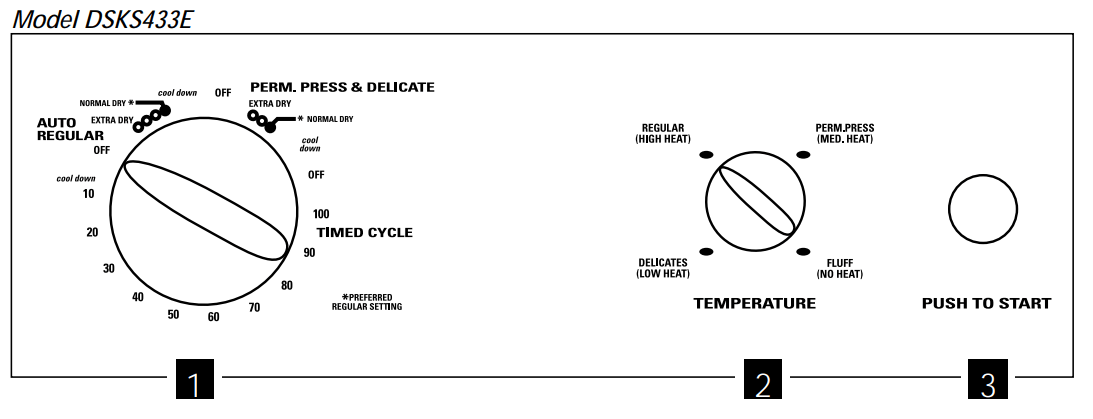
About the control settings.
NOTE: Not all features are available on all dryer models.
 Automatic cycles automatically determine fabric dryness. Select EXTRA DRY for heavier fabrics or to make regular fabrics drier. Timed cycles run for a selected time
Automatic cycles automatically determine fabric dryness. Select EXTRA DRY for heavier fabrics or to make regular fabrics drier. Timed cycles run for a selected time


 Start—Close the dryer door. Push the START button to start the dryer. Opening the door during operation will stop the dryer. To restart the dryer, close the door and select STARTto complete the cycle.
Start—Close the dryer door. Push the START button to start the dryer. Opening the door during operation will stop the dryer. To restart the dryer, close the door and select STARTto complete the cycle.
NOTE: Drying times will vary according to size of load, types of fabrics, wetness of clothes and condition of exhaust ducts. If clothes are still damp after using the Preferred Regular Setting, select Extra Dry on future similar loads.
Care and Cleaning of the Dryer.
Care and Cleaning of the Dryer
The Exterior: Wipe or dust any spills or washing compounds with a damp cloth. Dryer control panel and finishes may be damaged by some laundry pretreatment soil and stain remover products. Apply these products away from the dryer. The fabric may then be washed and dried normally. Damage to your dryer caused by these products is not covered by your warranty.
The Lint Filter: Clean the lint filter before each use. Slide out the grid that covers the filter. Run your fingers across the filter. A waxy buildup may form on the lint filter from using dryer-added fabric softener sheets. To remove this buildup, wash the lint screen in warm, soapy water. Dry thoroughly and replace. Do not operate the dryer without the lint filter and grid in place.
Have a qualified technician vacuum the lint from the dryer once a year.
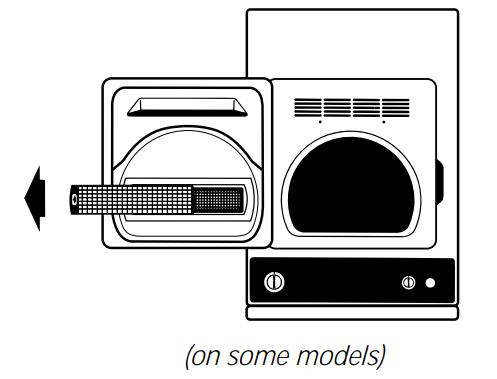
The Exhaust Duct: /nspect and clean the exhaust ducting at least once a year to prevent clogging.
A partially clogged exhaust can lengthen the drying time.
Follow these steps:
- Turn off electrical supply by disconnecting the plug from the wall socket.
- Disconnect the duct from the dryer.
- acuum the duct with the hose attachment and reconnect the duct.
The Exhaust Hood: Check with a mirror that the inside flaps of the hood move freely when operating. Make sure that there is no wildlife (birds, insects, etc.) nesting inside the duct or hood.

Loading and using the dryer.
Always follow the fabric manufacturer's care label when laundering.
Sorting and Loading Hints
As a general rule, if clothes are sorted properly for the washer, they are sorted properly for the dryer.
Do not add fabric softener sheets once the load has become warm. They may cause fabric softener stains. Bounce® Fabric Conditioner Dryer Sheets have been approved for use in all GE Dryers when used in accordance with the manufacturer's instructions.
Do not overload. This wastes energy and causes wrinkling.
Do not dry the following items: Fiberglass items, woolens, rubber-coated items, plastics, items with plastic trim and foam-filled items.
 Fabric Care Labels
Fabric Care Labels
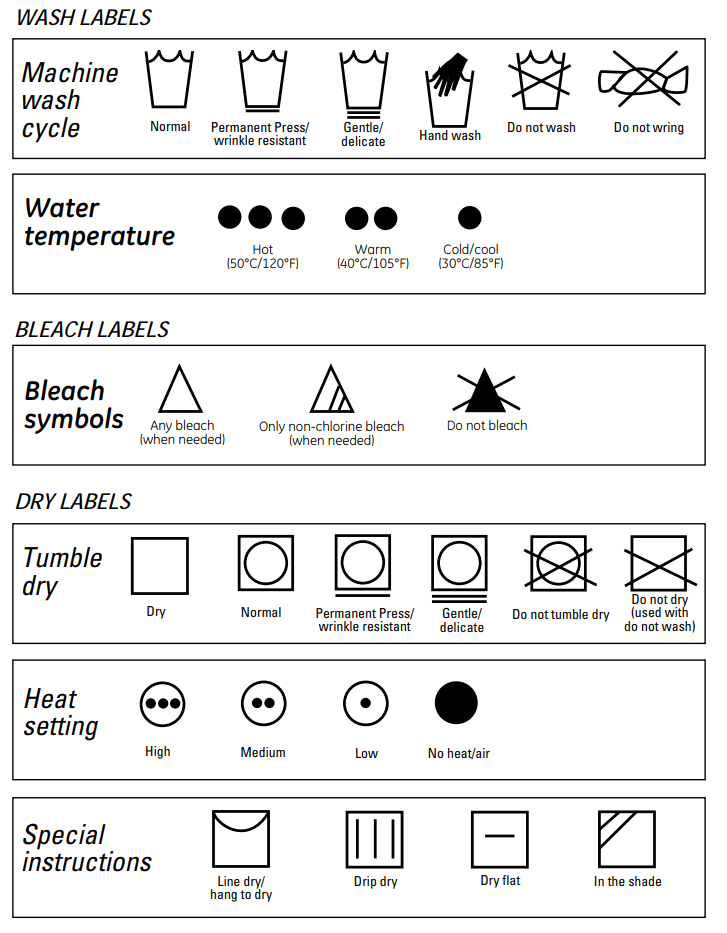
About venting the dryer.
For the best drying performance, the dryer needs to be properly vented. The dryer will use more energy and run longer if it is not vented to the below specifications. Carefully follow the details on Exhausting in the Installation Instructions.
- Use only rigid metal or flexible metal 4 diameter ductwork inside the dryer cabinet or for exhausting to the outside.
- Do not use plastic or other combustible ductwork.
- Use the shortest length possible.
- Do not crush or collapse.
- Avoid resting the duct on sharp objects.
- Venting must conform to local building codes.
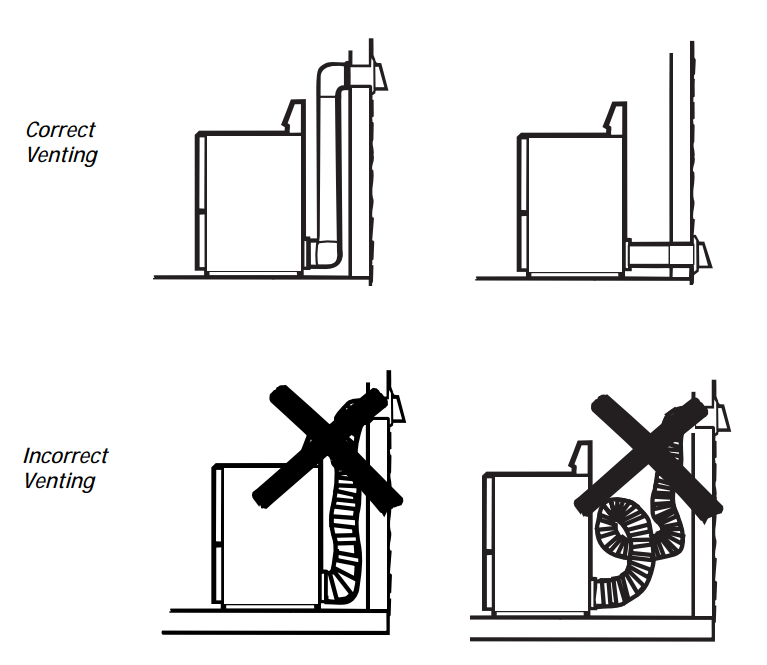
Troubleshooting Tips
Before you call for service...
Problem | Possible Causes | What To Do |
| Dryer doesn't start | Dryer is unplugged |
|
| Fuse is blown/circuit breaker is tripped |
| |
| Thermal limiter tripped |
| |
| Dryer doesn't heat | Fuse is blown/circuit breaker is tripped, the dryer may tumble but not heat |
|
| Dryer shakes or makes noise | Some shaking/noise is normal. Dryer may be sitting unevenly |
|
| Greasy spots on clothes | Improper use of fabric softener |
|
| Drying dirty items with clean ones |
| |
| Clothes were not completely clean |
| |
| Lint on clothes | Lint filter is full |
|
| Improper sorting |
| |
| Static electricity can attract lint |
| |
| Overloading |
| |
| Paper, tissue, etc. left in pockets |
| |
| Static occurs | No fabric softener was used |
|
| Overdrying |
| |
| Synthetics, permanent press and blends can cause static |
| |
| Inconsistent drying times | Type of heat |
|
| Clothes take too long to dry | Improper sorting |
|
| Large loads of heavy fabrics (like beach towels) |
| |
| Controls improperly set |
| |
| Lint filter is full |
| |
| Improper or obstructed ducting |
| |
| Blown fuses or tripped circuit breaker |
| |
| Overloading/combining loads |
| |
| Underloading |
| |
| 120-volt operation |
| |
| Clothes are wrinkled | Overdrying |
|
| Letting items sit in dryer after cycle ends |
| |
| Clothes shrink | Some fabrics will naturally shrink when washed. Others can be safely washed, but will shrink in the dryer |
|
See other models: GTD42GASJWW GFD14ESSNWW JKS5000ENES JT3800DHBB PGB911SEJSS
